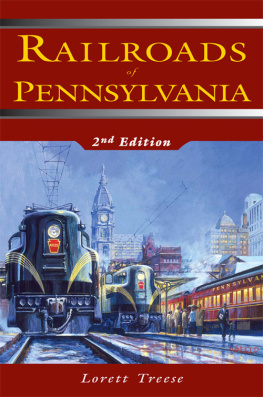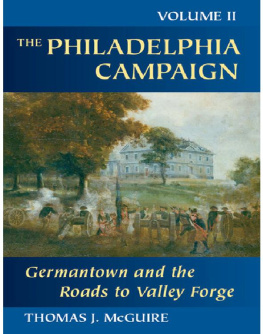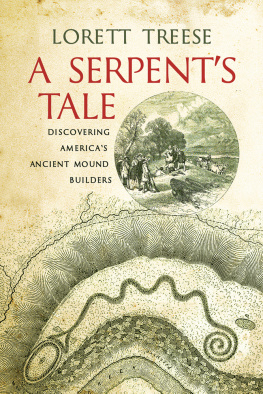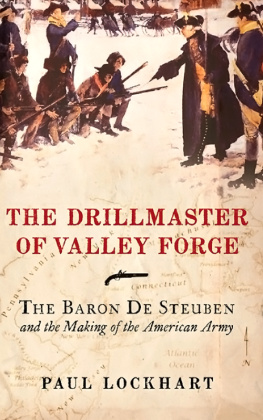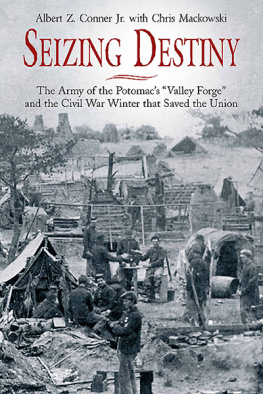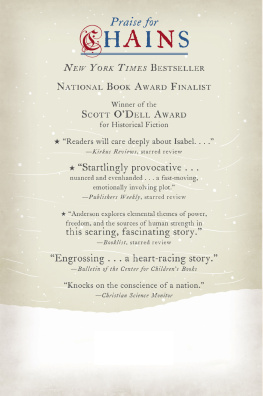Library of Congress
Cataloging-in-Publication Data
Treese, Lorett, 1952
Valley Forge : making and remaking a national symbol / Lorett Treese.
p. cm.
A Keystone book.
Includes bibliographical references (p. ) and index.
ISBN 0-271-01402-4 (cloth : alk. paper).
ISBN 0-271-01403-2 (pbk. : alk. paper).
1. Historic sitesPennsylvaniaValley ForgeConservation and restorationHistory.
2. Washington, George, 17321799HeadquartersPennsylvaniaValley Forge.
3. Valley Forge (Pa.)History.
4. ParksPennsylvaniaValley ForgeHistory.
5. Valley Forge National Historical Park (Pa.)
I. Title E234.T74 1995
974.8'13dc20 94-29460
Copyright 1995
The Pennsylvania State University
All rights reserved
Printed in the United States of America
Published by
The Pennsylvania State University Press,
University Park, PA 16802-1003
Second printing, 2003
It is the policy of The Pennsylvania State University Press to use acid-free paper. Publications on uncoated stock satisfy the minimum requirements of American National Standard for Information SciencesPermanence of Paper for Printed Library Materials, ANSI Z39.481984.
Lorett Treese
When this book was originally published in 1995, I predicted that with new leadership in place at Valley Forge National Historical Park, the Valley Forge Historical Society, and the Washington Memorial Chapel, a new era of cooperation would begin among the organizations engaged in historic preservation and interpretation at Valley Forge, but I did not foresee any major changes to the status quo. The American public had long since accepted historic preservation as a legitimate function of government, and the expanding park had long since eclipsed smaller organizations such as the Valley Forge Historical Society, which was just surviving in its tiny refuge on an island of private property surrounded by federal land.
By the autumn of 2002, however, visitors could begin their tours of Valley Forge at a new Welcome Center, which represented far more than the much-needed renovations to the parks old visitor center. The Welcome Center was designed to offer visitors a glimpse of a new educational, historical, and cultural institution that would soon be established at Valley Forge. It will be operated by the National Center for the American Revolution (NCAR), the newly established subsidiary incorporated by the Valley Forge Historical Society to work in genuine partnership with the National Park Service. While the rest of the park still looked much the same as it had in 1995, the Welcome Center was evidence that Valley Forge had recently witnessed a great many firsts in Americas history of preservation.
In 1995, the board of directors of the Valley Forge Historical Society began the self-assessment necessary to formulate a strategic plan. This process made it clear that the societys cramped quarters did grave disservice to its collection of priceless artifacts and documents. Its museum was too small to put on display more than a small percentage of the societys holdings, and office space for its employees was woefully inadequate. The society needed more room and its board optimistically called for a new facility. At the end of 1996, the society received a gift of $1 million from Warren V. (Pete) Musser for preliminary studies.
In 1997, the society recruited a board of scholars that included some of the nations most notable academic and public historians. They strongly endorsed the idea of a world-class museum of the American Revolution located at Valley Forge, but they also suggested that the Valley Forge Historical Society coordinate its activities with those of the National Park Service.
After the society accepted the Benninghoff Collection of the American Revolution, a rich and extensive private collection that nearly doubled its holdings, its need for a new facility grew even more urgent. In June 1998, the Valley Forge Historical Society legally separated itself from the Washington Memorial Chapel through an agreement that gave the society eight acres of land east of the chapel, where it planned to build.
Between 1982 and 1997, the National Park Service completed a planning process for Valley Forge National Historical Park that called for a new or significantly renovated visitor center. Toward the end of that planning process, the National Park Service and park superintendent Arthur Stewart approached the Valley Forge Historical Society about the possibility of collaborating on a single new facility.
The societys board members were justifiably cautious. Many could recall the battle with the Washington Memorial Chapel, and the enormous amount of time and money that had been spent to ensure that the society would continue to have a presence in the park. Through 1999, a plan was slowly hammered out guaranteeing that the Valley Forge Historical Society and the National Park Service would cooperate only as equal partners.
Congressman Curt Weldon, who had been working with both organizations all along, introduced a bill that authorized the Secretary of the Interior to enter into an agreement with the Valley Forge Historical Society to plan, construct, and operate an institution on park grounds to house the worlds largest collection of Revolutionary War artifacts and memorabilia. It also authorized allocation of funds to ensure the preservation of the Paoli Battlefield and Brandywine Battlefield. With the help of Representatives Joe Pitts and Joe Hoeffel, as well as Senators Rick Santorum and Arlen Specter, this legislation passed as the Pennsylvania Battlefields Protection Act of 1999.
Curt Weldon expressed his hope that the new institution will help make Philadelphia a mecca for people to come and learn more about the history of the Revolutionary War and the birth of our nation. Arthur Stewart commented, The historical society had a vision for the park that was not unlike the one that was forming in my own mind, although I did not envision a collaboration as full and fruitful as this one promises to be. This represents a major change from what the National Park Service is used to doing. Besides serving as a national model for future public-private collaborations, it would also be the first time that historical interpretation at a national park went well beyond showing the public what had happened at a particular site to focusing instead upon an entire era in the nations history.
In 2000, the Valley Forge historical Society created its new subsidiary called the National Center for the American Revolution to begin raising funds for the new institution. In the spring of 2002, John Rowe, president of Exelon, announced a gift of $1 million to transform the glass-walled visitor center into the new Welcome Center and a preview of what was to come. Additional funding for the larger project, a national center for the study of the American Revolution, would come from the state and federal governments, corporations, foundations, and individual donors.
On September 11, 2001, I was driving to Valley Forge to be interviewed by the producers of a History Channel program when I heard about the terrorist attacks on my car radio. Although all national monuments were immediately placed on alert and subsequently closed, we were permitted to remain in the shadow of the National Memorial Arch with a ranger posted reassuringly nearby. On that day I realized as never before that regardless of who is interpreting the Valley Forge experience or what means they use, the Valley Forge message of endurance, perseverance, courage, and faith will never become irrelevant to the American people.


